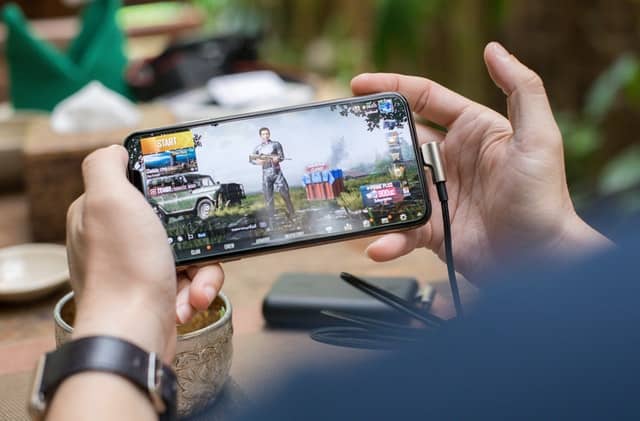When the iPhone was released back in the mid-2000s, everyone was ecstatic because a lot of games could be installed on the phone. Add to that that most of those games were free, and everybody was happy.
However, most of the games that we saw by the end of that decade were simple ones—board games and others that had mechanics similar to the games in the 1980s. There was a massive amount of apps that were not really games, but rather novelty items like a shotgun that you could cock and shoot.
Today, the mobile industry has changed, and online casino gaming is not an exception. Mobile slot machine games like the Blood Suckers 2 slot have evolved too. Let us take a look at how the mobile gaming industry has changed since 2010.
Here are the things that change over the years:
- More free games and ads
- More online games
- More revenue for developers
- More jobs for people
- More live streams.
Let us review each one and dig deeper!
More free games and ads
It is rare to find mobile games that require an upfront payment before you can download and play it. Today, almost all of them are free to play. While they have in-app purchases, the developers do not rely as much on them as they do on ads. Because people have their noses stuck on phones, and they do not want to buy untested titles, mobile game developers saw the potential of earning through ads.
All it takes to earn is massive traffic. Game developers are rewarded if their product is downloaded more than a million times, and if their games are played for hours. Knowing this, all they have to do is to find the right advertiser who will pay to show their ads to these audiences. So, instead of paying for the games with cash, you are watching adds and are supposed to buy their products in the long run.
More online games

@Avalon.red
A decade ago, most games were playable even if you were not connected to the internet. At that time, a lot of people did not have access to the internet when they were out of their houses. Most people connected to the internet via WiFi through their home routers.
As telecommunications companies improved their structures, data became more affordable, and this put more people online 24/7 via their mobile devices. The game developers capitalized on this by creating more interactive games where you get to play in real-time with your friends, like PUBG and Fortnite.
The availability of fast internet connection made games more addicting. People got so engrossed with social gaming that developers kept churning out new titles every month. The improvement in the accessibility of the internet also allowed software developers to produce and market storage-heavy games.
Since the players are connected to the internet, they do not have to store their gaming data on the phone. Instead, the gaming data are stored in the servers of the developer—accessible by players for as long as they are connected. The result? More complicated games that you could only play on a desktop computer in the past are now playable on mobile devices.
More revenue for developers
About 20 years ago, the revenue of game developers came only from middle class and upper-class families—those that could afford to buy a gaming console and separately sold gaming cartridges.
Then mobile phones took over the world, and today, almost every human being has one. The developers saw this opportunity for a massive marketing campaign to earn more money. They realized that if they couldn’t sell their products with upfront money, they could give them away for free and then charge the smallest possible increments through in-app purchases.
All it took was to do the math. If a game was downloaded 1 million times, and 10% of these players paid $5 per month, then the developer has a great source of bread and butter for one game alone! Just imagine: 10% of 1 million is 100,000 people. If these 100,000 people consistently spend $5 per month, then this devs can make $500,000 in a single game.
Today, mobile gaming is a $10 billion industry in North America, and even casino operators and giant software developers are jumping in the fray. While not everyone has seen success, those that have been in the gaming industry have leverage. They know how the system works, they know how to create addictive games, and this is how they manage to create successful titles for their mobile game library.
More jobs for people
For a long time, developers are what you would consider as brick-and-mortar stores. These companies had to spend a ton of money for research and game development.
Programmers had no jobs. They should be the best at what they do or they wouldn’t get hired. There were only a few gaming companies that could offer employment. But when the mobile industry kicked in, these jobless developers saw a new light. Now, they can write their own software and publish their own games without the need of getting employed.
And that drove the massive gaming content in the mobile industry. There are so many developers who want their games to get downloaded on phones, and this demand gave rise to the need for more programmers.
The other approach to this is to set-up an indie company with your friends, and this is what many programmers do. Since they now cut the middle person—the gaming corporation—they share the revenue with each other.
More live streams
For a long time, games have been designed to work only on the data stored on your computer. The landscape and the details are all cached in your mobile device, and your world is pretty much limited.
Today, there is no shortage of live streaming games whose environment change in real-time or live. Most of them are in the form of MMORPG where players get to see the avatar of other players at the same time they are playing or enter a new environment with different players at any given time.
Live streaming is also popular with online casino players. The mobile slot machine, which is linked to a casino server, changes the values of the jackpot prizes in real time. The same concept applies to live dealer games where the dealer sits in a studio and deals the cards or drops the ball on the roulette wheel after all the bets are in. Since the games are streaming live, they are much more palpable and realistic than those that are computer-generated.
In other games, players can even talk to each other over VOIP or chat with each other while they are playing. This increases participation because the players, even if they are not physically together, know that their friends are doing the same thing.
Summary
Mobile gaming still has a lot under its sleeve. Today, all these games depend on the future of mobile technology. One day, these devices may be able to project holograms. If they do, then we can expect developers to take the lead and create games that produce holographic images—no more sticking our noses on the screen.
One day, virtual reality may also kick in, and all we may need to do is to connect our VR goggles to our phone. We can lie down at the back of the car and play the games, enter a virtual world and get entertained for as long as we want.






Leave a Comment